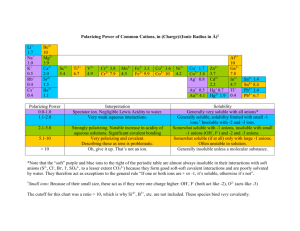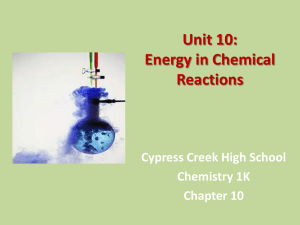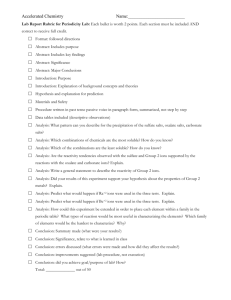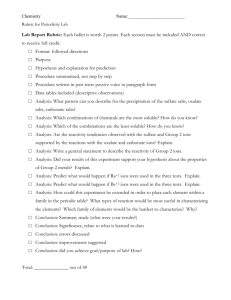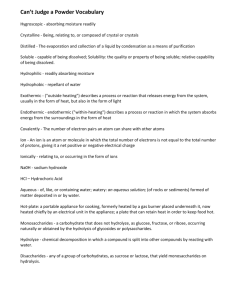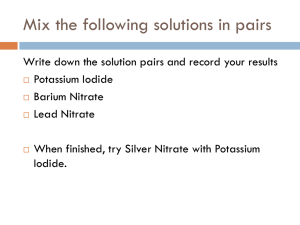Chemistry 201 - Oregon State University
advertisement
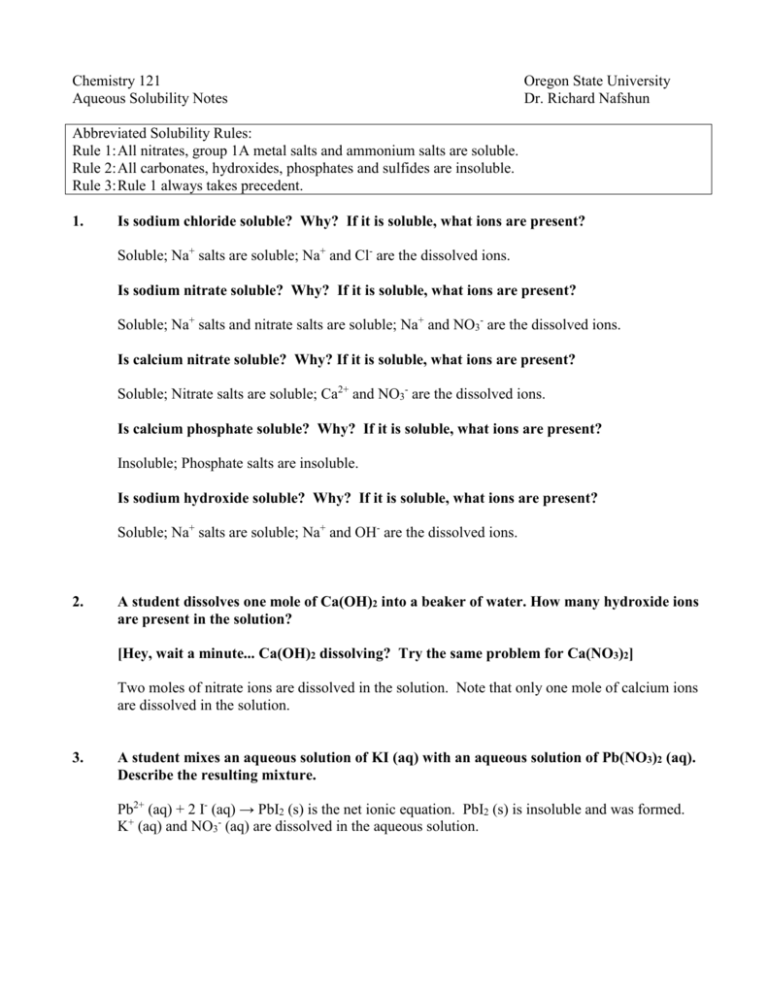
Chemistry 121 Aqueous Solubility Notes Oregon State University Dr. Richard Nafshun Abbreviated Solubility Rules: Rule 1: All nitrates, group 1A metal salts and ammonium salts are soluble. Rule 2: All carbonates, hydroxides, phosphates and sulfides are insoluble. Rule 3: Rule 1 always takes precedent. 1. Is sodium chloride soluble? Why? If it is soluble, what ions are present? Soluble; Na+ salts are soluble; Na+ and Cl- are the dissolved ions. Is sodium nitrate soluble? Why? If it is soluble, what ions are present? Soluble; Na+ salts and nitrate salts are soluble; Na+ and NO3- are the dissolved ions. Is calcium nitrate soluble? Why? If it is soluble, what ions are present? Soluble; Nitrate salts are soluble; Ca2+ and NO3- are the dissolved ions. Is calcium phosphate soluble? Why? If it is soluble, what ions are present? Insoluble; Phosphate salts are insoluble. Is sodium hydroxide soluble? Why? If it is soluble, what ions are present? Soluble; Na+ salts are soluble; Na+ and OH- are the dissolved ions. 2. A student dissolves one mole of Ca(OH)2 into a beaker of water. How many hydroxide ions are present in the solution? [Hey, wait a minute... Ca(OH)2 dissolving? Try the same problem for Ca(NO3)2] Two moles of nitrate ions are dissolved in the solution. Note that only one mole of calcium ions are dissolved in the solution. 3. A student mixes an aqueous solution of KI (aq) with an aqueous solution of Pb(NO3)2 (aq). Describe the resulting mixture. Pb2+ (aq) + 2 I- (aq) → PbI2 (s) is the net ionic equation. PbI2 (s) is insoluble and was formed. K+ (aq) and NO3- (aq) are dissolved in the aqueous solution. 4. Consider the mixture of two aqueous solutions: one of lithium phosphate and one of calcium nitrate. The net ionic equation for the process that occurs is: Ca2+ (aq) + PO43- (aq) → Ca3(PO4)2 (s) is the net ionic equation. Ca3(PO4)2 (s) is insoluble and was formed. Li+ (aq) and NO3- (aq) are dissolved in the aqueous solution.
